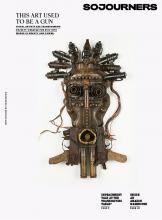A YOUNG WOMAN armored in her blazer, caffeinated and tethered to the phone line of a Manhattan hedge fund, hardly seems the optimal audience for an artist whose work hinges on stillness and contemplation. And yet—if you saw an enormous book of James Turrell’s installations perched on your desk, how could you not open it?
That was my reasoning as I re-encountered Turrell’s oeuvre, third cappuccino in hand. I didn’t know it then, but Turrell’s artistic framework would provide a new way to think about New York City. More specifically, his clarity of vision vis-à-vis light and space stands in contrast to a city replete with people the critic John Berger describes as “resigned to being betrayed daily by their own hopes.”
The city that allegedly never sleeps is wonderful in many ways, but by the end of my tenure there I was increasingly overwhelmed by the hustle, noise, and collective anxiety around, well, everything. Temping at a capital investment firm, while a welcome paycheck, was not my idea of meaningful work, and sitting like a bird in a glass tower, detached from the people below, even less so. Reaching for Turrell’s book, which was likely deemed politically neutral enough for an office setting, was an act of desperation and belief that I could still be surprised, awed even. And I was.
Read the Full Article

